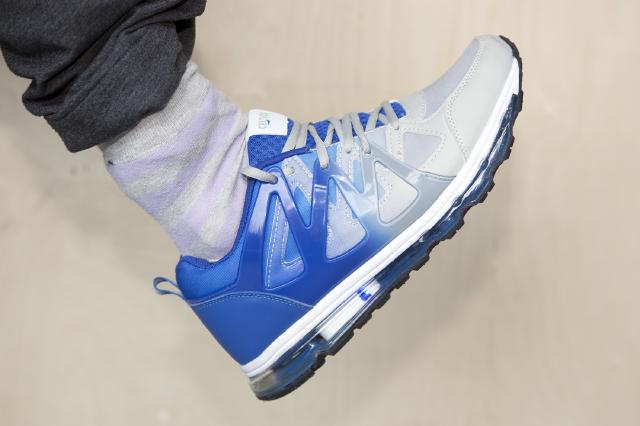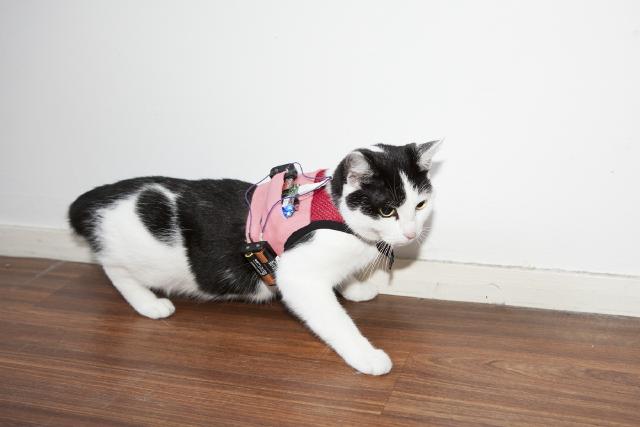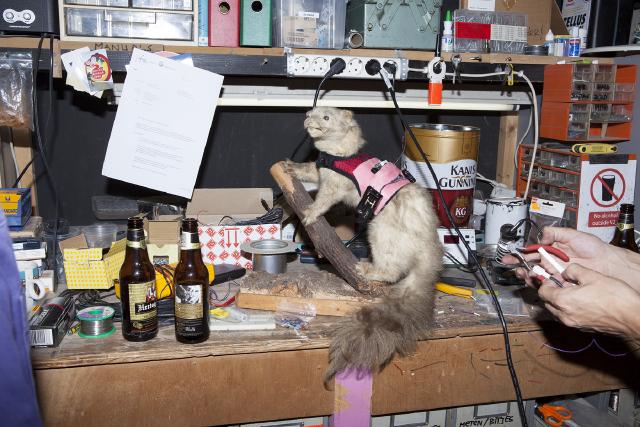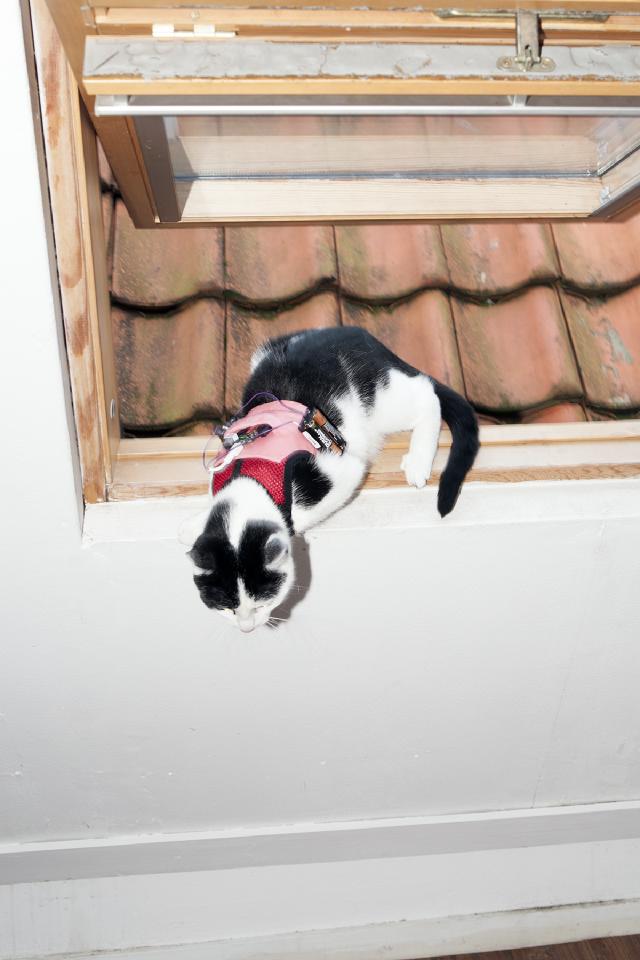Meshenger

Sneakernet
Sneakernet and Feline Filesharing (below) are implementations of the mesh-network communication software Meshenger, initiated by Dennis de Bel and Roel Roscam Abbing, developed during a week long guerrilla residency at V2 Institute for Unstable Media in collaboration with Jan Geert Munneke, Martino Morandi and Radovan Misovic.
Sneakernet is a trade-off between bandwidth and latency, It consists of a router, battery and a pair of sneakers on which you can load files. When your pair of shoes meets another ‘node’ that ‘runs’ the same software, their content will synchronize, allowing you to share a large number of files without human intervention, across town and further. Energy harvesting battery-charging-coil to be installed in next iteration of sneakernet, creating a truly symbiotic node, that lives off the energy generated by its user and in return, sharing and retrieving files.
Feline Filesharing

A wireless non-hierarchical meshaging file sharing implementation. Animal borne. Mostly nocturnal. Neighbourhood networks. Roaming. Open-WRT-powered. USB rechargable.
A pack animal is a working animal used by humans as means of transporting materials or digital information by attaching them so their weight bears on the animal’s back; the term may be applied to either an individual animal or a species so employed. While carrying loads is traditionally done by pack animals of the ungulate (hoofed animals) species or domesticated Equidae (horse family), smaller species such as the Mustelidae (weasel family) or smaller members of the Felidae (cat-like) species can be employed for carrying data broadcasters.

Meshenger
Meshenger is an opportunistic messaging software used for a speculative broadcast communication project. The starting point is an electronic messaging system running on a wireless mesh network. The messages propagate through the network when devices that come in contact with each other synchronize their content. It is non-hierarchical, every node receives, relays and broadcasts messages.
Meshenger is not a ‘Darknet’ or intended for dark world scenarios, like protests, disasters etc. It is an alternative or parallel infrastructure for a bright world. A world that is not driven by boring, time-, and ‘innovation’ killing efficiency and synchronicity. But tries to challenge this status quo of massive connectedness by offering a slower, more conscious alternative.
Using Meshenger, devices detect each other by continuously broadcasting an identifier packet while listening for those of other nodes. As soon as two (or more) nodes detect each other, they will try to synchronize the messages on each node.

The users of the network can interface with the nodes to send or receive messages by using the web-browser of their smartphone or computer. The messages can be received and sent at any time, but they are only synchronized in the network when other nodes are encountered.
Meshenger is supposed to run on an Open-WRT router that has been configured to work in mesh networks. Code, how-to and other implementation examples available here.

Made possible by Worm Rotterdam, V2 institute of unstable media and Creative Fund NL.